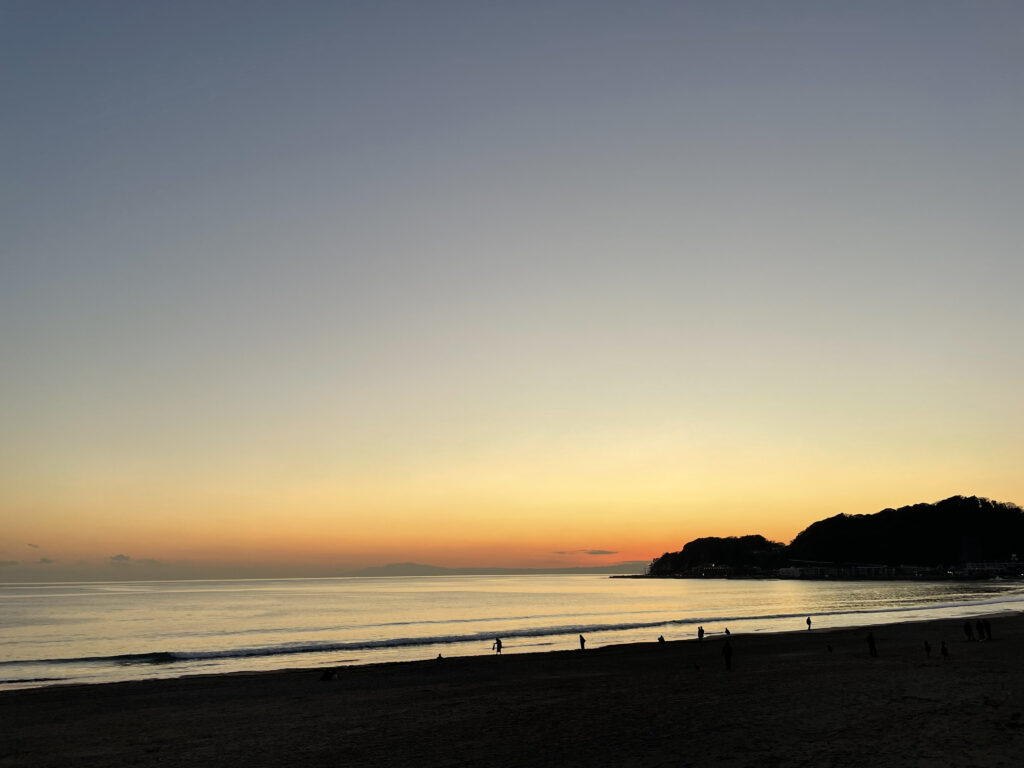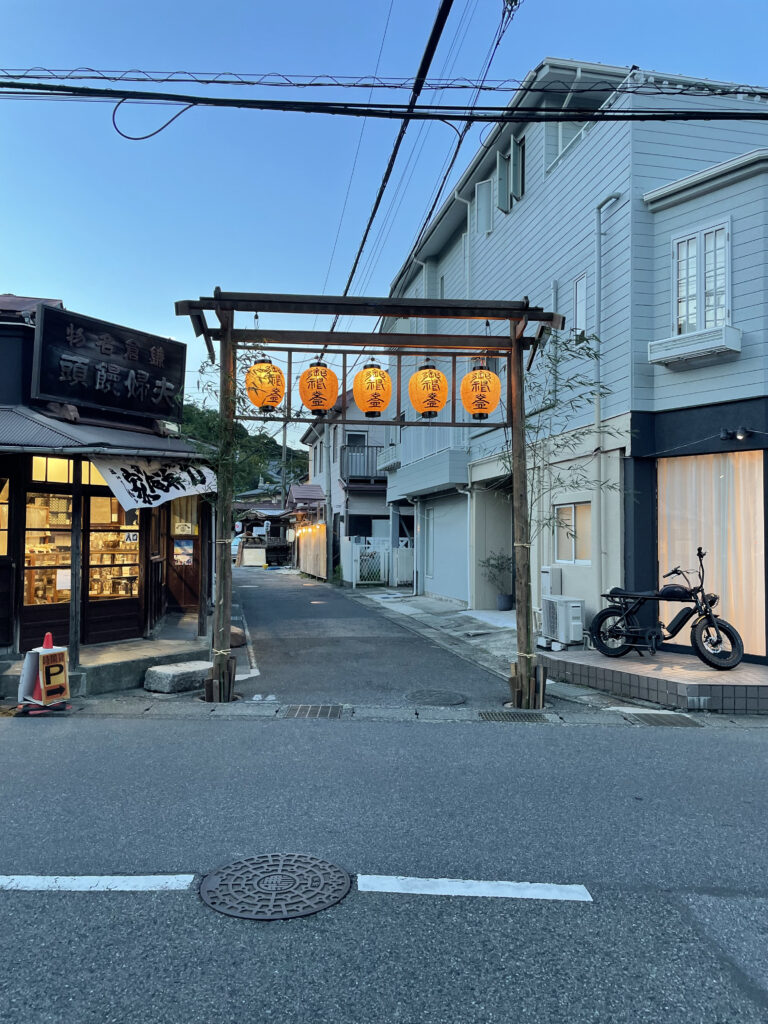In Kamakura, the Sakanoshita area—where the Enoden train runs just inches away from narrow alleys—is known not so much as a tourist spot, but as a neighborhood where daily life still thrives.
In this quiet, lived-in corner of the city, two important traditional Shinto rituals have been carefully preserved over generations: the Ishigami Shrine Annual Festival and the Goryo Shrine Grand Festival (Menkake Gyoretsu Procession).
Far from being mere tourist events, these festivals are deeply rooted in the everyday lives and hearts of the local community.
In this article, we’ll introduce the history, meaning, and highlights of each festival in detail.
Discover the Unique Charm of Kamakura’s Ishigami and Goryo Shrine Festivals
1.Ishigami Shrine Annual Festival (Okunagashi): A Sacred Sea Ritual to Welcome Summer
Schedule: July 19–21, 2025 (around Marine Day, a national holiday in Japan)
Highlight: The Kaijō Togyo (sacred sea procession) held on July 21

A Prayer from a Town that Lives with the Sea
On the final day of the Ishigami Shrine Annual Festival—July 21—a sacred maritime ritual called Okunagashi takes place. This ceremony is unique to Sakanoshita, a community long connected with the ocean. The event begins when a mikoshi (portable shrine) departs from Goryo Shrine, making its way through narrow alleyways before reaching the Sakanoshita beach. There, the mikoshi is carefully loaded onto a fishing boat, marking the start of the Kaijō Togyo (sea procession).
One of the most striking moments comes when local youths, known as oyogite (“swimmers”), leap into the sea and accompany the boat carrying the mikoshi by swimming alongside it. The procession heads out to sea, toward a point where Enoshima Island can be seen in the distance. As the swimmers circle the boat, they gently release offerings—such as red rice and paper ornaments—into the ocean.
This powerful scene symbolizes the deep bond between the community and the sea. It’s not just about placing the shrine on a boat; it’s a primal and sacred ritual in which people physically enter the water, using their own bodies to carry prayers to the gods.
A Role and a Pride Passed Down Through Generations
In the past, locals would say, “The ocean cannot officially open for summer until this ritual is complete.” This reflects the deep significance of the Ishigami Shrine Festival for the Sakanoshita community. Young residents carry the mikoshi, don traditional attire, and take part in offerings of sacred dances and prayers. Every element is a “living culture” passed down through generations, preserving the spirit and memory of the town.
This fusion of sea and festival has become a hidden summer highlight in Kamakura, quietly beloved by photographers and visitors alike.
2.Goryo Shrine Grand Festival – The Enchanting Menkake Procession that Colors Kamakura’s Autumn
Schedule: September 12 (Fri) – 18 (Thu), 2025
Main Event: Menkake Gyoretsu (Masked Procession) held in the afternoon on September 18
A Masked Procession Born from the Fusion of Shinto and Buddhism
Goryo Shrine, dedicated to the Heian-period warrior Kamakura Gongoro Kagemasa, has long been revered as the guardian deity of the Sakanoshita and Hase areas. Every year on September 18, the shrine hosts its Reitaisai (Grand Annual Festival), featuring the Menkake Gyoretsu—a masked procession that is designated as an Intangible Folk Cultural Property by Kanagawa Prefecture. This unique ritual has no equal elsewhere in Japan.
In the procession, participants wear ten types of expressive, symbolic masks—such as the “Elderly Man,” “Demon,” “Long Nose,” “Old Sage,” “Crow Tengu,” and the comical “Okame,” a pregnant woman figure. The “Okame” character is humorously portrayed with a stuffed belly, and it’s said that touching her belly brings blessings for a safe childbirth.
While the exact origins of the Menkake Gyoretsu remain unclear, some believe it may trace back to the Gigaku masked dances of the Nara period, or to legends involving Minamoto no Yoritomo. What is clear is that the ritual embodies an ancient form of worship, using masks to bridge the spiritual and human worlds.
A Ritual Where Solemnity and Humor Coexist
The charm of the Menkake Gyoretsu lies in its unique blend of humor and sacredness. Although the masks appear whimsical, each carries deep symbolic meaning, and the entire procession is carried out with great solemnity.
Unlike typical festivals with food stalls or flashy performances, this event is a pure religious ceremony, observed in a quiet and respectful atmosphere. Participants range from village elders to children, making the festival a powerful expression of community spirit and cultural continuity.。

Access & Important Notes
- Nearest Station: Approximately 5 minutes on foot from Hase Station (Enoden Line)
- Please Note:Both festivals take place along narrow alleyways. In particular, the Menkake Gyoretsu (Masked Procession) may be canceled in case of rain. We recommend checking in advance for any schedule changes.
In Conclusion: Experience Sacred Rituals Rooted in Everyday Life
Even within the popular tourist destination of Kamakura, the Sakanoshita area offers a nostalgic and peaceful atmosphere. The festivals that have been passed down here for centuries are not just events—they are living expressions of the community’s spiritual culture.
By learning the stories and meanings behind these rituals, you’ll gain a much deeper appreciation than by simply watching them.
If you’re planning a visit to Kamakura, don’t miss the opportunity to witness this rare and moving connection between people and the divine—an experience unique to this time of year, and this very place.
